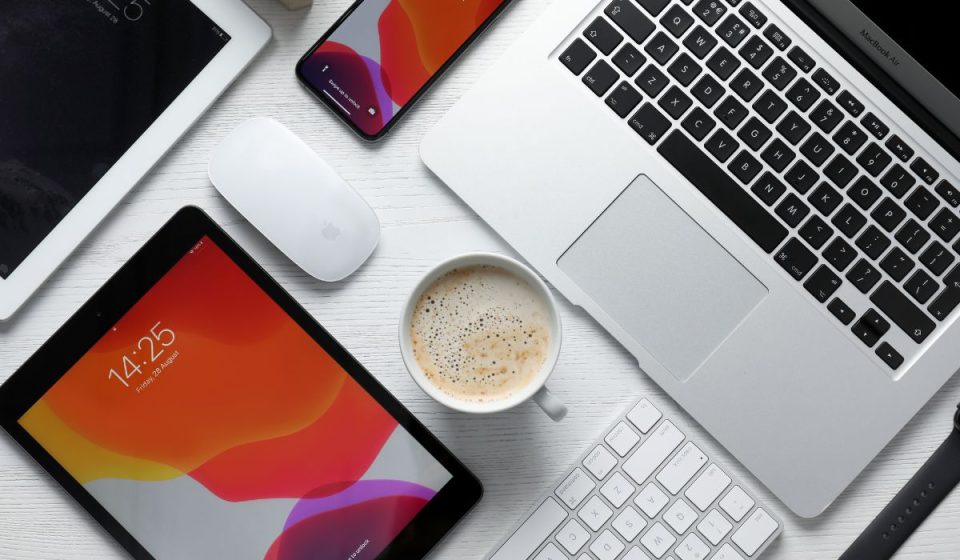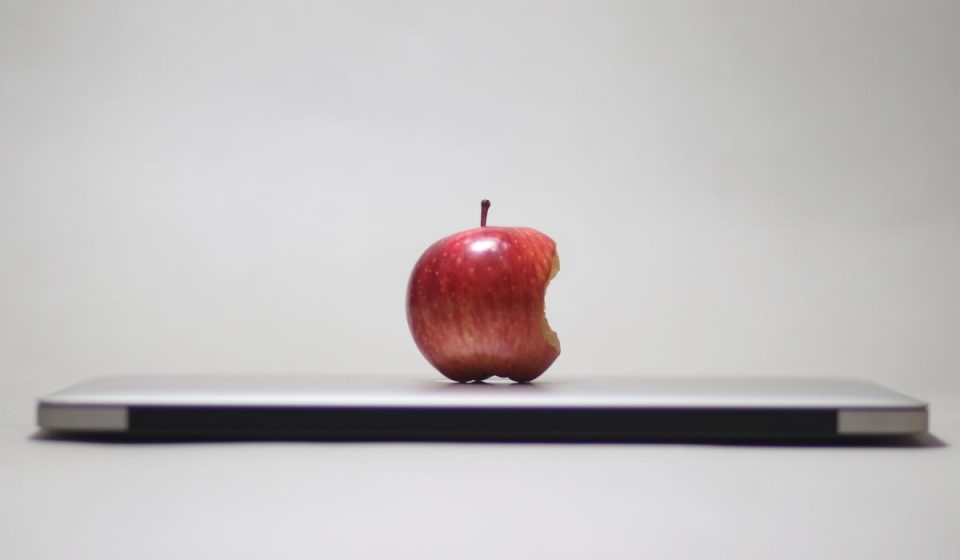“Mac” is a household name now. Whether you’re using a MacBook, an iMac, or a Mac Studio, you’re interacting with a product line that’s been around for decades. But have you ever stopped to wonder why Apple called its computer a “Mac” in the first place?
The story behind the name is more than just marketing. It involves a favorite fruit, a legal workaround, and a vision for personal computing that still shapes Apple today.
What Does “Mac” Stand For?

The word “Mac” is short for Macintosh, which was the name Apple gave to its personal computer line launched in 1984. The full name was used during the product’s early years, especially when the first model — the Macintosh 128K — made its debut.
The name quickly became “Mac” in public conversations. People found it quicker to say and easier to remember. Apple eventually followed this trend, using “Mac” in official product lines like MacBook and iMac.
While “Macintosh” was once printed on machines and boxes, it quietly faded from Apple’s branding. But the “Mac” part stayed — and became even more powerful as Apple refined its identity.
Who Came Up with the Name “Macintosh”?
The credit goes to Jef Raskin, an Apple employee who wanted to create a computer that anyone could use. He believed computers shouldn’t just be for engineers or businesspeople — they should be friendly and accessible.
While working on the project in the late 1970s, he gave it the internal name “Macintosh” after his favorite kind of apple, the McIntosh. The spelling was slightly altered to avoid trademark issues with McIntosh Laboratory, a popular audio equipment company at the time.
Raskin’s idea wasn’t just about a name. He envisioned a machine that prioritized user experience — simple, graphical, and inviting. The name “Macintosh” captured that spirit, making it feel like something personal rather than mechanical.
Steve Jobs wasn’t initially involved in the naming or the early design of the Mac project. But as the project gained momentum and showed promise, Jobs took over and helped shape it into the product that eventually launched in 1984.
Why Did Apple Stick with “Mac”?

In the early days of personal computing, most devices had cold, technical names. You had the IBM PC, the Commodore 64, and other models that sounded like part numbers. Apple was different from the start, and the name “Macintosh” helped show that.
There were several reasons Apple stuck with the name:
- It felt personal — not corporate or intimidating.
- It aligned with the Apple brand, reinforcing the fruit theme.
- It was easy to pronounce and remember.
- It sounded friendly, fitting for a computer designed to be human-centered.
- It created a soft contrast to Apple’s more serious competitors.
Apple’s marketing strategy was also a big part of it. The 1984 Super Bowl ad didn’t just introduce a product — it introduced a message: that Apple was here to free people from rigid, controlled technology. “Macintosh” was the name attached to that mission.
Eventually, as product lines expanded and branding evolved, “Macintosh” gave way to “Mac” — a modern, flexible label that worked across laptops, desktops, and beyond.
Was “Macintosh” the Official Name at First?
Yes, the very first consumer Mac was officially called the Apple Macintosh 128K. It featured a built-in display, mouse, and a graphical user interface that was revolutionary at the time.
The name appeared on marketing materials, packaging, and even the case of the computer itself. As Apple released new models — such as the Macintosh SE, Macintosh Plus, and Macintosh II — the name continued to be used prominently.
Over time, as Apple shifted toward more streamlined naming, the “Macintosh” label became less common. By the time the iMac launched in 1998, “Mac” had taken over in public branding. Apple dropped “Macintosh” entirely from product packaging and software references in the 2000s.
Despite that change, the name’s legacy remains embedded in Apple’s culture. Every modern Mac still traces its roots back to the original Macintosh.
How the “Mac” Name Helped Define Apple’s Identity
The choice of name did more than label a product — it helped shape Apple’s public image.
While other tech companies focused on power and technical specs, Apple focused on experience and simplicity. Calling their computer “Macintosh” sent a message: this was something different.
The Mac wasn’t just a computer — it was a tool for artists, writers, designers, and anyone who didn’t want to deal with command lines and complicated menus. The name played a part in building that connection.
Over the years, “Mac” has grown to symbolize more than just a machine. It stands for creative freedom, clean design, and a focus on the user. The name gave Apple the flexibility to evolve — from the boxy original Macintosh to sleek MacBooks and powerful Mac Studios today.
Even Apple’s advertising embraced this identity. Campaigns like “Think Different” and the famous “I’m a Mac / I’m a PC” ads reinforced the idea that Mac was more than hardware — it was a mindset.
Fun Facts About the Name “Mac”
- The name “Macintosh” was picked before the project had a finished design.
- Apple had to license the name from McIntosh Laboratory due to trademark overlap.
- Early Macs started up with a smiling face icon — a friendly gesture in line with the name.
- The Lisa computer, released before the Mac, failed partly due to confusing branding.
- Steve Jobs didn’t like the original Mac keyboard and wanted more refinement — proof he came to care deeply about the product’s feel and identity.
Final Thoughts
The Mac got its name from a type of apple — but it became something far bigger than its inspiration. Thanks to Jef Raskin’s vision and Apple’s marketing instincts, the word “Mac” now stands as one of the most recognized names in tech.
It’s short, simple, and iconic — just like the product it represents.
When people say “Mac” today, they’re not just talking about a computer. They’re referring to a legacy of user-friendly design, innovation, and creativity that all began with a humble name chosen in the late 1970s.
And now you know exactly why a Mac is called a Mac.
